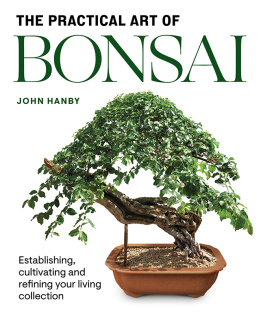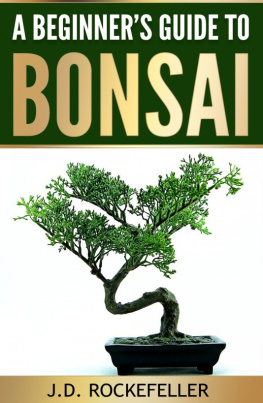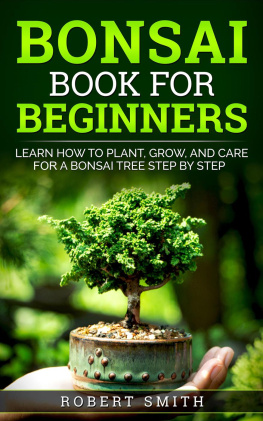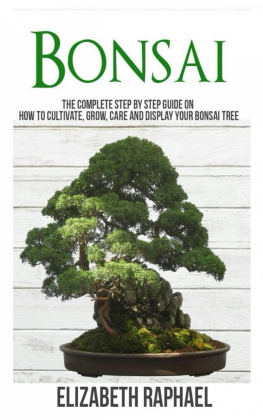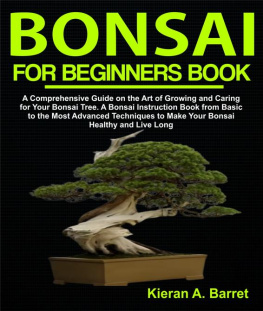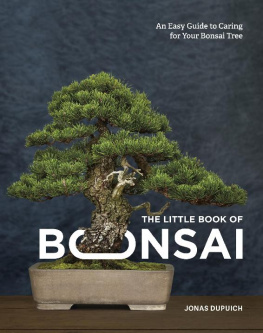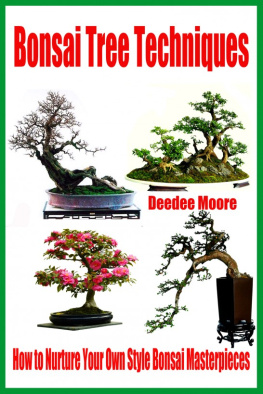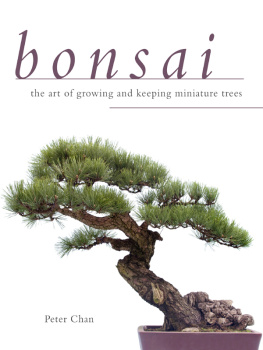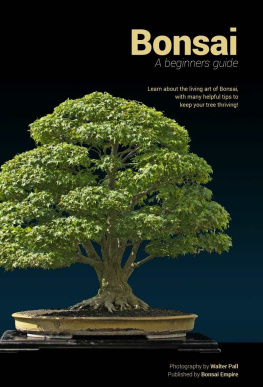Page List

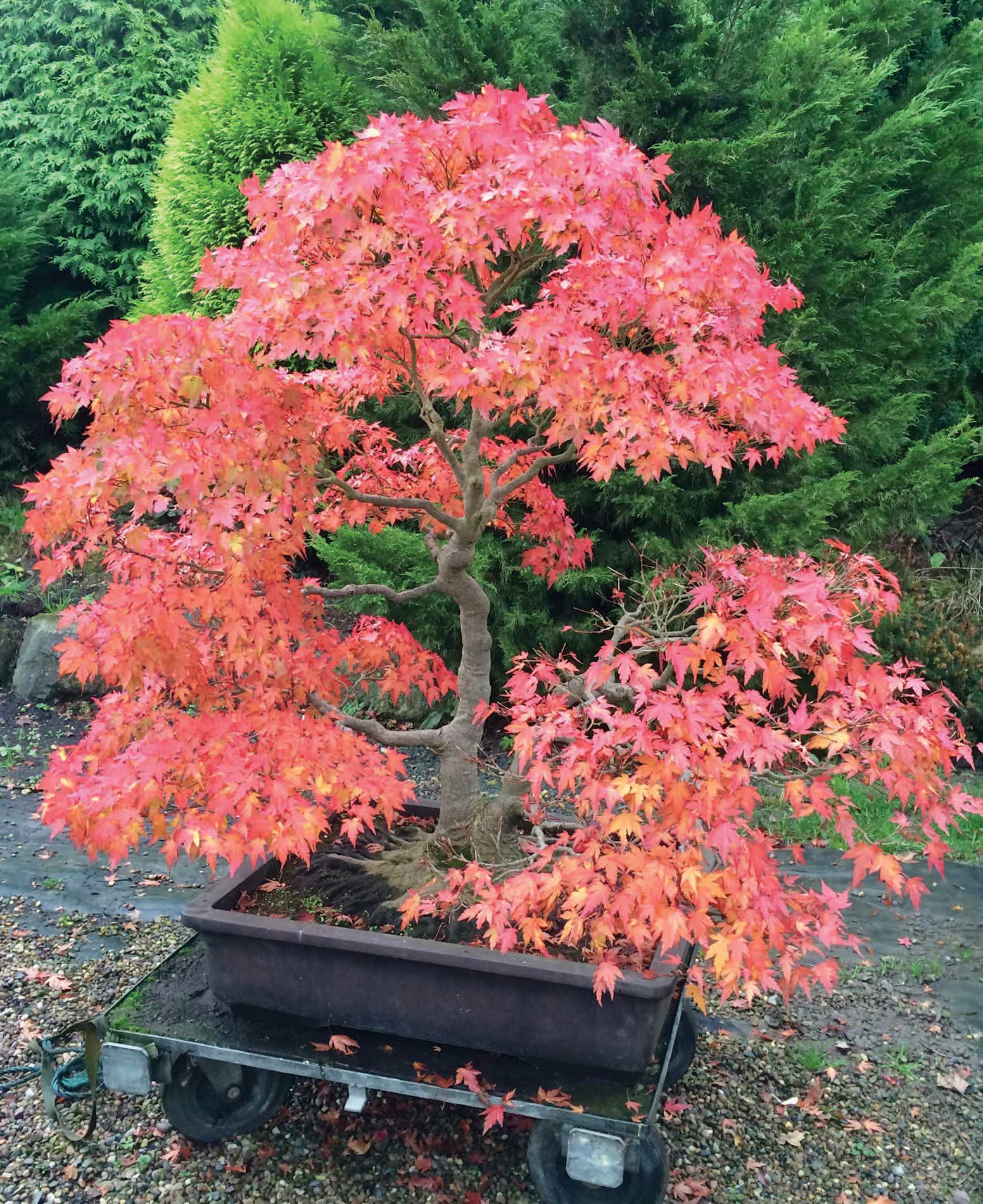
This maple was in my collection for many years and is seen here showing off its autumn colours. The tree was awarded a prize for its amazing flared root base by Mr Daizo Iwasaki at one of the Ginkgo Bonsai Exhibitions in Belgium.
THE PRACTICAL ART OF
BONSAI
JOHN HANBY

First published in 2022 by
The Crowood Press Ltd
Ramsbury, Marlborough
Wiltshire SN8 2HR
www.crowood.com
This e-book first published in 2022
John Hanby 2022
All rights reserved. This e-book is copyright material and must not be copied, reproduced, transferred, distributed, leased, licensed or publicly performed or used in any way except as specifically permitted in writing by the publishers, as allowed under the terms and conditions under which it was purchased or as strictly permitted by applicable copyright law. Any unauthorised distribution or use of this text may be a direct infringement of the authors and publishers rights, and those responsible may be liable in law accordingly.
British Library Cataloguing-in-Publication Data
A catalogue record for this book is available from the British Library.
ISBN 978 1 78500 986 0
Cover images
Front cover: Sageretia theezans from the private collection of John Hanby.
INTRODUCTION
Its hard to believe that I started my bonsai journey more than thirty years ago. Just like you, I was fascinated by the idea of having a miniature version of a full-size forest tree growing in a pot on my windowsill. There was definitely something magical or mystical about this concept and my curiosity was aroused. I had no idea what I was letting myself in for or how it would change and shape the rest of my life. I joke with my students on a beginners class that just like cigarettes, bonsai should come with a warning note, this product can seriously damage your wealth!; but when I think of the pleasure, enjoyment and satisfaction this hobby has given me, the people and trees I have been fortunate to meet, this product is priceless.


Miniaturizing and growing a tree in a small pot just captures the imagination.
I had tried some seeds but that was a disaster, not one green shoot appeared. Next came a mail-order bonsai, which, the label informed me, was a Japanese temple tree. Unfortunately, this tree did not survive for long, but now I realize I was trying to keep an outdoor tree alive in a totally inappropriate indoor environment. I was determined not to give up and, subsequently, acquired a juniper that I did manage to keep alive for many years, despite its early existence being, again, mistakenly confined to indoors. I suppose my early attempts were not so much thwarted by bad advice but by no real sound advice at all! So, if you are in the same predicament that I was in, I hope that you will find some of the early chapters in this book really useful. The first two chapters should help you in the acquisition of your tree, whilst the practicalities of keeping it alive and healthy are discussed in , depending on whether it is an indoor or an outdoor tree.
A Bonding with Nature
Our fast-paced lives today are dominated by the high-tech industrialized civilizations we are a part of. The idea of a slow-paced, gentle, rural environment seems to have all but disappeared. Somewhat surprisingly, the amount of leisure time we have does seem to be increasing and there is a prevailing trend to want to escape to the countryside. The interest in gardening is also becoming more popular with large garden-centres extremely busy in the summer months and more gardening programmes being shown on television. Bonsai allows us to take this connection with nature to another, much closer, level.

Outdoor bonsai thriving and brightening up the garden but close enough to the house to be enjoyed from within.
To develop a bonsai, you need to harness nature, to work with nature in order to achieve a desired goal or shape. Some of the tasks involved in shaping your bonsai will result in you having to go over every branch of the tree on a regular basis. You will get to know your tree intimately; you will understand and bond with your tree. The transformation is immediately satisfying when you create a bonsai out of a piece of raw material, but then it becomes even more rewarding when you see the tree back-budding and evolving appropriately because of your intervention. Chapters 7 and 8 on branch development should help you in your partnership with nature to build up the structure of your tree and then refine it further.
In my other life, before bonsai, I was a chartered surveyor with my own estate agency business. As my interest in the hobby grew, I found that working on one of my trees was so engrossing it was the only time I could truly forget about work and any other ongoing problems. In addition to this therapeutic quality, you will find that, like most pastimes connected with nature and gardening, bonsai is spiritually uplifting. It will lead you through the seasons, there is always something to enjoy and something to look forward to. Throughout this book I have tried to refer to seasons of the year rather than months in order to make it easier for you to appreciate the timing of tasks. My bonsai experiences are centred around Yorkshire, England, in a temperate climate. Using this information, you will have to adapt the advice given to coincide with the season and climate in your particular location.
Time
Planning your life now will generally involve thoughts and discussions around today, tomorrow, next week and, inevitably, next month. When you start making plans for your bonsai, suddenly you are talking about next year or the year after; days and weeks are replaced by growing seasons. Your concept of time takes on a whole new perspective. Maybe its not such a bad thing that nature is trying to slow the pace of your life down and instil in you a greater sense of patience. This might sound daunting and long-winded, but it is surprising how quickly time goes by and how your trees will change. People say you should enjoy the bonsai journey and not just the arrival at the destination. But you dont want to be stuck at a station, time is precious and it is much nicer to arrive within a reasonable period of time. I have viewed the collections of some enthusiasts after twenty years involvement in the hobby and their trees have changed little. As a bonsai teacher, I do find this frustrating when I know how much a tree can be improved in just five years. However, if they have enjoyed their trees and had much pleasure from the hobby over the years, who am I to criticize? But people can lose interest in the hobby and become disappointed or frustrated when they are failing to make progress. Most of my students are excellent bonsai technicians and they just seek some input from me to point them in the right direction to take their trees to the next level. For things to change and to move in the right direction, it is important that you are performing the right tasks at the right time. Mr Takeo Kawabe, the bonsai master I studied with in Belgium, instilled in me the principles of watch and wait. Leave your trees alone, let them grow, watch them and wait until the time is right to intervene again to carry out the next task. Enthusiasts often do too much to their trees in too short a time and the trees suffer as a result. They need time to recover.

